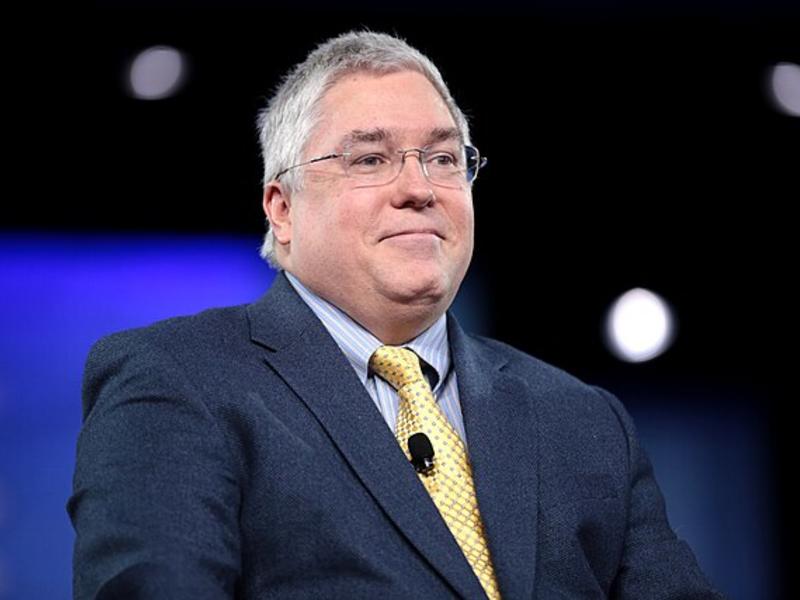
While many of us are still in lockdown mode, the 2020 presidential election is anything but. In fact, it’s going into hyperdrive.
President Trump’s campaign is now up with a new ad entitled “Comeback,” complete with cameo appearances from Nancy Pelosi, Andrew Cuomo, Joe Biden, the Blue Angels, and the Thunderbirds.
In a fascinating memo and slide deck, Doug Sosnik, who served as political director in the Clinton White House, analyzed the state of the race six months out and the Trump campaign’s interesting “small-county strategy” in battleground states. Sosnik points to the three blocs of voters he sees as key for Trump’s reelection: non-college-educated white women, college-educated white men, and suburban voters.
The first two groups are clearly conflicted. Working-class whites have been the essence of the Trump base. While the men in that group are absolutely locked into the Trump camp since the 2016 election, there has been some slippage among women in that group. They are starting to vote more like other women and less like the men in their economic cohort. Conversely, while white women with college degrees are trending more toward Democrats and Joe Biden, college-educated men are still up for grabs.
Geographically speaking, with urban America solidly in the Democratic and anti-Trump camp and small town/rural America on the Republican and pro-Trump side, the battleground is in the suburbs.
Meanwhile the political world is engaged in its quadrennial game of guessing Biden's running mate. For all of the oxygen and time expended on the question, the truth is that in terms of electoral politics, running mates don’t matter much. Americans vote for president. Some people seem to think that entire states or demographic groups can turn on the selection of a running mate. But that would be a bit like someone buying a house on the basis of the appliances.
Arguably, the last time a running made the difference in a key state was John F. Kennedy’s pick of Lyndon Johnson in 1960. Others maintain that the right running mate can boost the turnout and/or the support levels among a key constituency. But does a running mate really make that much of a difference? Walter Mondale’s choice of Rep. Geraldine Ferraro in 1984 didn’t help him much. Democrats ended up carrying only Mondale’s home state of Minnesota and the District of Columbia, in what became an 18-point blowout, as women sided with Ronald Reagan by a 12-point margin. Nor did Gov. Sarah Palin help John McCain much with women in their 7-point loss, as women sided with Barack Obama and Joe Biden by 13 points.
When an incumbent president is running for reelection, the election is first and foremost a referendum on that incumbent. Do voters want to renew that president's contract for another four years? That will be especially true this fall. For three years, American politics has revolved around Trump. Three-quarters of voters either strongly approve or strongly disapprove of him. In terms of turnout, Trump is chairing the get-out-the-vote campaigns for both parties. With so many either loving or loathing him, it’s unlikely that a running mate would overshadow attitudes toward Trump.
Some suggest that this year, because of Biden's age, his choice is one of those rare ones that really do matter. Turning 78 years old 17 days after the election, he would be the oldest newly elected president in history, eclipsing Trump, who took office at age 70. Speculation abounds that Biden might not seek a second term—which might give his veep a leg up on others in the party in 2024.
To put it another way, Biden’s pick matters more in terms of where the party is heading over the next few years than in terms of who wins this year. Five of the last 13 vice presidents (Harry Truman, Lyndon Johnson, Richard Nixon, Gerald Ford, and George H.W. Bush) have gone on to become president. Two assumed the highest post after the death of a president (Truman and Johnson), one assumed office after a resignation (Ford), one was elected at the end of eight years as vice president (Bush), and another was elected eight years after leaving the No. 2 post (Nixon). As Jonathan Martin and Alexander Burns pointed out in The New York Times on Sunday, “The ramifications of Mr. Biden’s choice will be profound. Even if he loses in November, his decision will all but anoint a woman as the party’s next front-runner, and potentially shape its agenda for the next decade, depending on if she is a centrist or someone more progressive.”
Because it is his first decision as the Democratic nominee, the choice is a window into his decision-making and priorities. Biden has already indicated that he will choose a woman running mate, which makes sense given that 59 percent of those who voted Democrat for president in 2016 and 58 percent who cast their ballots for Democrats in the 2018 midterm elections were women.
An overtly political pick, one that screams optics more than substance, one that appears to be just another politician checking off a demographic, political, or ideological box, would seem to be ill-advised. Alternatively, a pick that projects seriousness and places a value on competence—maybe even someone who has never run for elective office—would seem highly desirable.
Just one example of the kind of pick that would scream seriousness might be Sylvia Mathews Burwell, who served as deputy White House chief of staff and then director of the Office of Management and Budget in the Bill Clinton administration, and as Health and Human Services secretary under President Obama. She’s just one example of outside-the-box thinking. The reality is that Biden will probably try to split the difference, going with someone who is eminently qualified but also has campaign experience—which brings us back to names such as Amy Klobuchar or Gretchen Whitmer.
This story was originally published on nationaljournal.com on May 5, 2020










Subscribe Today
Our subscribers have first access to individual race pages for each House, Senate and Governors race, which will include race ratings (each race is rated on a seven-point scale) and a narrative analysis pertaining to that race.